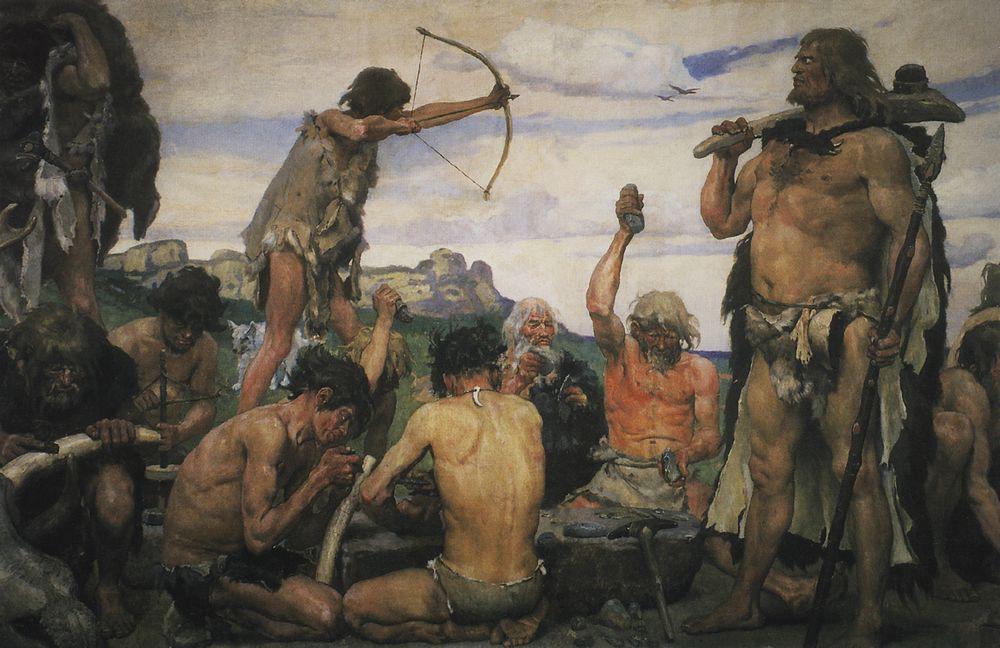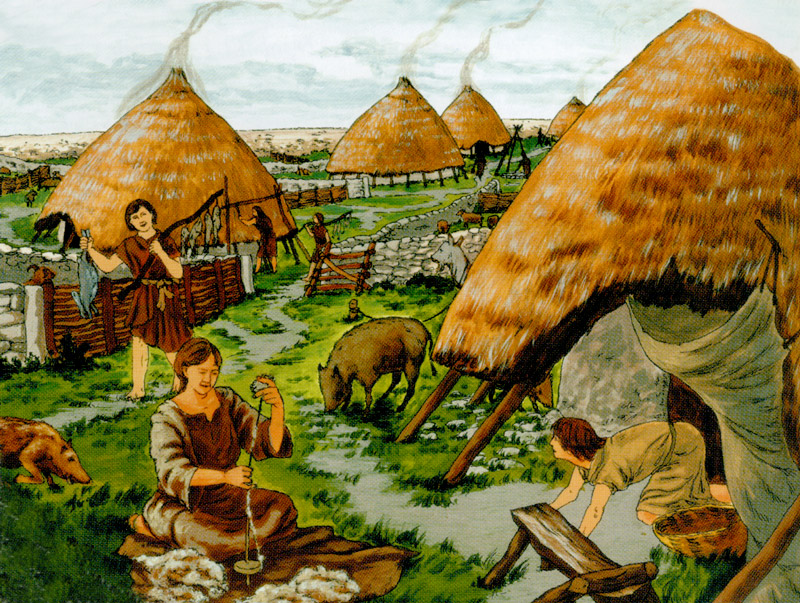In writing these articles I have come to understand how many people are voiceless in the collective imaginary land that is role playing games. I hope that these articles make our hobby and industry a place where more people are welcomed and encouraged to become involved. Which brings me to North America, the part the second.
I spoke to a friend of mine and her words still resonate with me. I asked Susan what she might want in terms of how her people are portrayed in role playing. She replied that she would not want her people's traditions taken for granted. Sacred is sacred. In struggling to find a theme for this article, her words helped me focus in on what is important. So I will begin, before talking about the people, with my "How would I use this?" section.
It is not hard for those of us descended from European, especially Western European ancestry, to relate to the sacred. Stonehenge comes to mind. Beowulf and the legend of Arthur. Joan of Arc. The stand at Thermopylae. Rome at its best and at its worst. A host of cultural touchstones that help give us some common context and cultural language. They literally are sprinkled through our role playing; ideas from history and mythology that fuel how we play.
So if I were going to run a campaign among the North American native tribes, prior to European arrival, it would be heavily focused on those ideas that they found and still find as sacred. It would be an intimate campaign, with no Vecna or dragons or Sauron. Perhaps a band of folk who have suffered loss who wander from place to place, helping others and battling legends. The magic would be subtle and beautiful and full of mystery. It would deal with the idea of what is sacred and how the sacred shapes the lives of the characters. Of course this can be taken into science fiction as well and Shadowrun does some of this with its setting.
What is sacred to the native tribes of North America? A best we can generalize because there are over 500 recognized tribes in the United States, including many in Alaska. Susan mentioned a few things: The Dance, The Ceremony, The Animals, and of course The Land itself. In our modern times issues of land ownership and management have come up again as natural resources are found on tribal lands. To the native peoples, land is more than just a means of making a living or a sign of prosperity. It represents a means of preserving cultural history and identity. Indigenous folk see themselves as protectors of the land and everything associated with it. Equally important are the spiritual and religious aspects of the land and specifically sacred spaces. These sacred places are integral to the tribes spiritual practices and when the land is disrespected, this insults the people and their beliefs. They also believes it angers the land. This should be an important concept in any campaign run using native peoples.
I would recommend talking to native folk about their own tribes and tribal traditions instead of relying on just Internet searches. In general most scholars break the native peoples of North America, excluding Mexico (covered here) into ten different cultural areas. These are the Arctic, Subarctic, Northeast, Southeast, Plains, Southwest, Great Basin, California, Northwest Coast, and Plateau. These cultures had distinct lifestyles from one another, with some being agricultural and others more nomadic. Tragically some have been lost along the way and that is something we should never forget. If we as games masters and content creators can keep them alive in our games, then that is one way of continuing their legacy into the future.
contributed by Sean Hillman
I spoke to a friend of mine and her words still resonate with me. I asked Susan what she might want in terms of how her people are portrayed in role playing. She replied that she would not want her people's traditions taken for granted. Sacred is sacred. In struggling to find a theme for this article, her words helped me focus in on what is important. So I will begin, before talking about the people, with my "How would I use this?" section.
It is not hard for those of us descended from European, especially Western European ancestry, to relate to the sacred. Stonehenge comes to mind. Beowulf and the legend of Arthur. Joan of Arc. The stand at Thermopylae. Rome at its best and at its worst. A host of cultural touchstones that help give us some common context and cultural language. They literally are sprinkled through our role playing; ideas from history and mythology that fuel how we play.
So if I were going to run a campaign among the North American native tribes, prior to European arrival, it would be heavily focused on those ideas that they found and still find as sacred. It would be an intimate campaign, with no Vecna or dragons or Sauron. Perhaps a band of folk who have suffered loss who wander from place to place, helping others and battling legends. The magic would be subtle and beautiful and full of mystery. It would deal with the idea of what is sacred and how the sacred shapes the lives of the characters. Of course this can be taken into science fiction as well and Shadowrun does some of this with its setting.
What is sacred to the native tribes of North America? A best we can generalize because there are over 500 recognized tribes in the United States, including many in Alaska. Susan mentioned a few things: The Dance, The Ceremony, The Animals, and of course The Land itself. In our modern times issues of land ownership and management have come up again as natural resources are found on tribal lands. To the native peoples, land is more than just a means of making a living or a sign of prosperity. It represents a means of preserving cultural history and identity. Indigenous folk see themselves as protectors of the land and everything associated with it. Equally important are the spiritual and religious aspects of the land and specifically sacred spaces. These sacred places are integral to the tribes spiritual practices and when the land is disrespected, this insults the people and their beliefs. They also believes it angers the land. This should be an important concept in any campaign run using native peoples.
I would recommend talking to native folk about their own tribes and tribal traditions instead of relying on just Internet searches. In general most scholars break the native peoples of North America, excluding Mexico (covered here) into ten different cultural areas. These are the Arctic, Subarctic, Northeast, Southeast, Plains, Southwest, Great Basin, California, Northwest Coast, and Plateau. These cultures had distinct lifestyles from one another, with some being agricultural and others more nomadic. Tragically some have been lost along the way and that is something we should never forget. If we as games masters and content creators can keep them alive in our games, then that is one way of continuing their legacy into the future.
contributed by Sean Hillman



